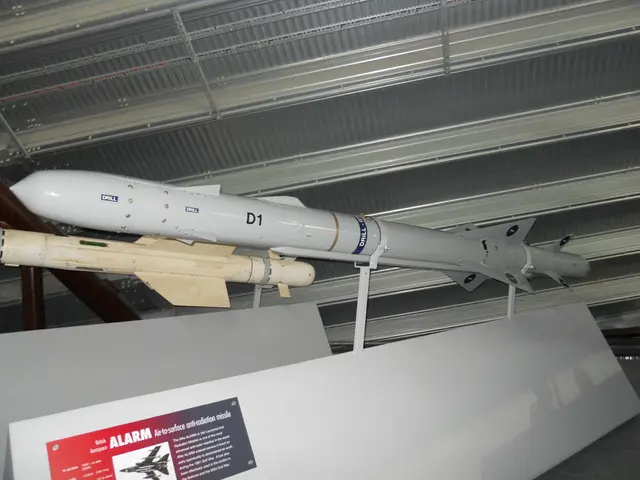Information will be sent to the appropriate digital communication systems.
In the ever-evolving landscape of technology, 5G has emerged as a key player, revolutionizing industries worldwide. This cutting-edge technology has found a significant foothold in commercial use, particularly in the realm of Industry 4.0 and Internet of Things (IoT) solutions.
Companies like Kontron, supplying industrial 5G IoT connectivity modules and embedded computer technology, and Dresden-based startup fünfeinhalb Funksysteme, developers of BlitzFunk, a 5G alternative for industrial real-time wireless communication with low latency guarantees, are at the forefront of this movement. They operate within burgeoning ecosystems focused on Industry 4.0 and IoT solutions.
Established players such as Nokia, Ericsson, Siemens, and BMWK are also leveraging 5G's potential. For instance, BMWK is using 5G for remote support via Augmented Reality (AR), while Siemens is employing it for Preventive and Predictive Maintenance.
The benefits of 5G are manifold. It offers flexibility for setting up production, data collection, and real-time analysis for production control. With its scalability, it can cater to small installations and extend to entire campuses. High data rates and ultra-short response times (control) are achievable with 5G, making it a viable replacement or complement to wired (Ethernet) or other wireless technologies (WiFi).
Moreover, 5G can connect a large number of sensors, ensuring seamless networking in production and logistics. It enables full end-device mobility and flexibility, eliminating the need for cables. This results in increased productivity, flexibility, remote services, automation, and integration of processes.
However, the implementation of 5G requires 5G-capable tools, machines, and modems (including brownfield), resources for planning, setup, and operation of the 5G network, and a license for 5G spectrum or a partnership with a mobile network operator. Industrial WiFi, while a limited alternative, is restricted by its end devices, mobility, and Quality of Service (QoS).
WiFi6 is another alternative, but 5G offers superior performance, security, and reliability. With 5G, networks can be realized together with or independently of mobile network operators, making it an adaptable solution for various production sites.
The 5G technology is in the 2-4 degree of maturity, having been in commercial use since 2020. With over 100 worldwide references for its implementation, it's clear that 5G is not just a buzzword, but a transformative technology for industries, enabling wireless, high-performance, reliable, and secure networking of machines and people.
Read also:
- Solar energy company, Imperium, alongside QORAY Mobility & Energies Solar Business, bolsters Nigeria's environmental future by producing superior solar panels domestically and offering flexible payment options.
- AI Inspection Company, Zeitview, Secures $60 Million Funding for Expansion
- Future of Payments: If the U.S. regulates stablecoins through the GENIUS Act, according to Matt Hougan
- BMW asserted that the upcoming iX3 electric model could generate similar profits as its gasoline counterpart, the X3.








